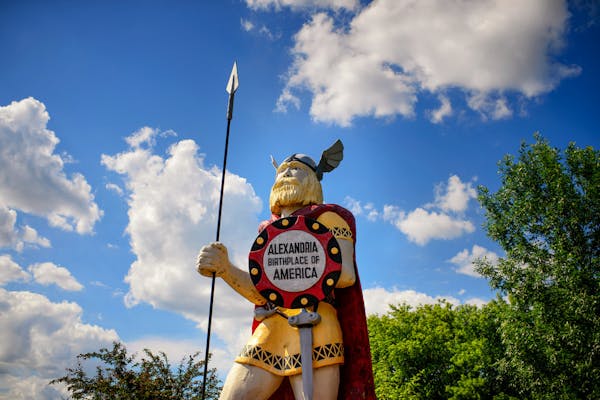Why is the Minnesota Legislature's session so short?
With the arrival of spring came an all-too-familiar flurry of headlines for Suzanne O'Connor. State lawmakers in St. Paul were once again locked in a stalemate over the budget and other key policy debates, as the May 20 deadline for the Legislature to adjourn rapidly approached.
The end-of-session scramble raised a question for the retired federal government worker from St. Paul.
"They never get anything done, so why not extend it out and give them more time to get it done?" O'Connor asked.
O'Connor took her inquiry to Curious Minnesota, our community-driven reporting project fueled by great questions from inquisitive readers. Her question — "Why is the Minnesota Legislature's session so short" — was selected by readers who also wanted us to answer that question.
The short answer (pun intended): Because the state Constitution says so. The Constitution currently limits each two-year session of the state House and Senate to a maximum of 120 days. Article IV, Section 12 of the document dictates that each biennium begins on the "first Tuesday after the first Monday in January of each odd-numbered year." For the current session, that meant lawmakers gaveled in on January 8. The session must end "after the first Monday following the third Saturday in May of any year."
This year, that date was Monday, May 20.
While the timing of the session has traditionally stretched through the winter and early spring — a convention historians believe was intended to accommodate farmers serving in what framers hoped would be a part-time citizen Legislature — the length of sessions fluctuated over the years.
At statehood, the Legislature met annually for as long as they wanted, according to David Schmidtke, deputy director of the Legislative Reference Library. That first session, which spanned 1857 to 1858, the Legislature met a whopping 254 days.
After that, they scaled back to 60 days most years. By 1877, lawmakers decided to trim the schedule even more. At the urging of the then-governor, the Legislature agreed to meet 60 days every two years. The limit bumped up to 90 days just a decade later. In the 1960s, it was increased again, to the current cap of 120. The requirement that the Legislature gavel out by late May came into being at a 1972 Constitutional Convention.
So is Minnesota's session actually short? That depends. Each state has its own rules governing the legislative calendar, and schedules vary significantly.
Legislators in Utah met for just six weeks this year. Others, including in California, are full-time and convene year-round. Four states — Montana, Nevada, North Dakota and Texas — meet every other year. Eleven place no limit on how many days the Legislature can meet.
Of course, the end of the regular session in Minnesota doesn't mean legislators are done for the year. The constitution also gives the governor the authority to call a special session to put legislators back to work on unfinished or urgent business, including passing a state budget. Just because these sessions are "special" doesn't mean they're rare. In recent years, legislators have needed more time to finish their work. This year was no exception. Lawmakers returned to their respective chambers for a one-day special session that ended at 7 a.m. on Saturday, May 25.
The prevalence of special sessions is another element of state government that really irks O'Connor, especially given the fact that lawmakers can collect per-diem payments that add to their base salary when they return to St. Paul to tie up loose ends they didn't finish in time. For that reason, the 71-year-old found the reason behind the deadline interesting, but not satisfying.
"If that's the case and they don't want to change it, they need to look at the time involved and how they spend it," she said. "They get elected because they're supposed to be smart people."
---
If you'd like to submit a Curious Minnesota question, fill out the form below:
Read more Curious Minnesota stories:
How many iconic roadside attractions are there in Minnesota and where are they?
Is Minnesota's tiny Lake Itasca the true source of the Mississippi River?
How much are electric vehicles affected by Minnesota's extreme cold?
How did Nicollet Island become parkland with private housing on it?
Why are Minnesotans the only ones to play Duck, Duck, Gray Duck?
Where did the term Minnesota Nice come from, and what does it really mean?
Why isn't Isle Royale a part of Minnesota?
Why does Minnesota tax Social Security benefits?
Why is Uptown south of downtown in Minneapolis?
Why can't Minnesotans figure out how to zipper merge?
What percentage of Minnesotans spend their entire lives here?
Were Minneapolis' skyways first created to combat the cold – or something else?
Why hasn't Minnesota ever produced a U.S. president?
How did Minnesota's indigenous people survive the extreme winters?




